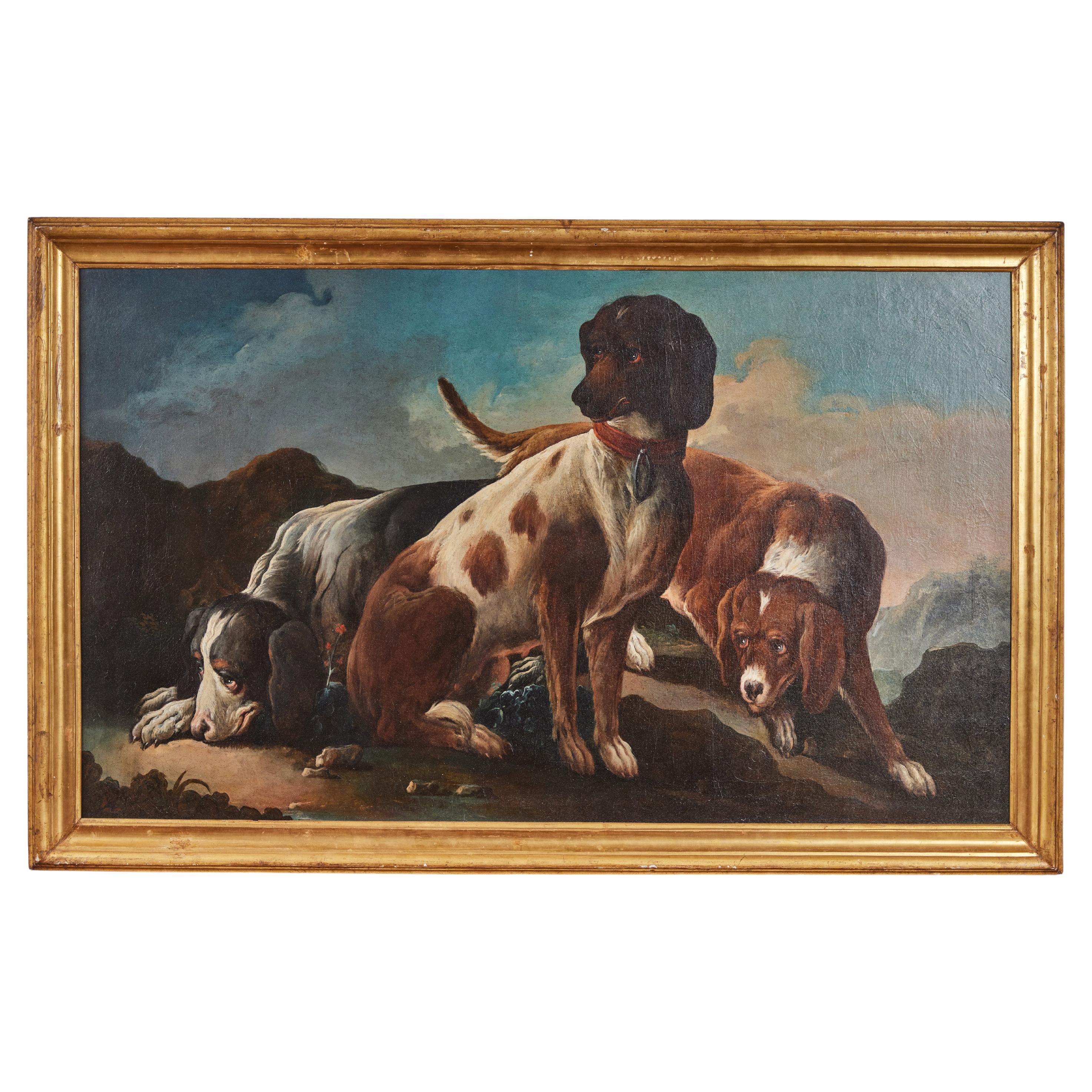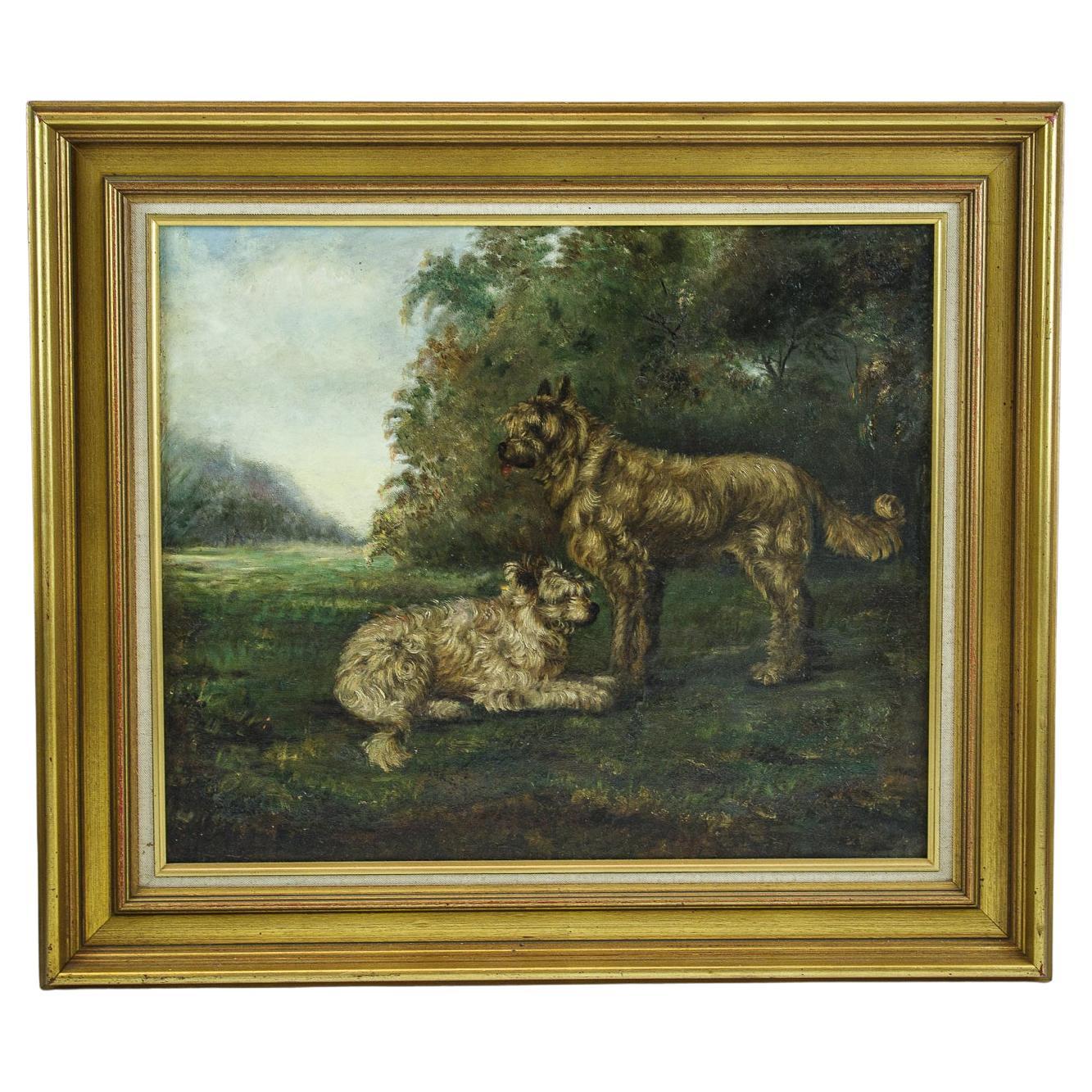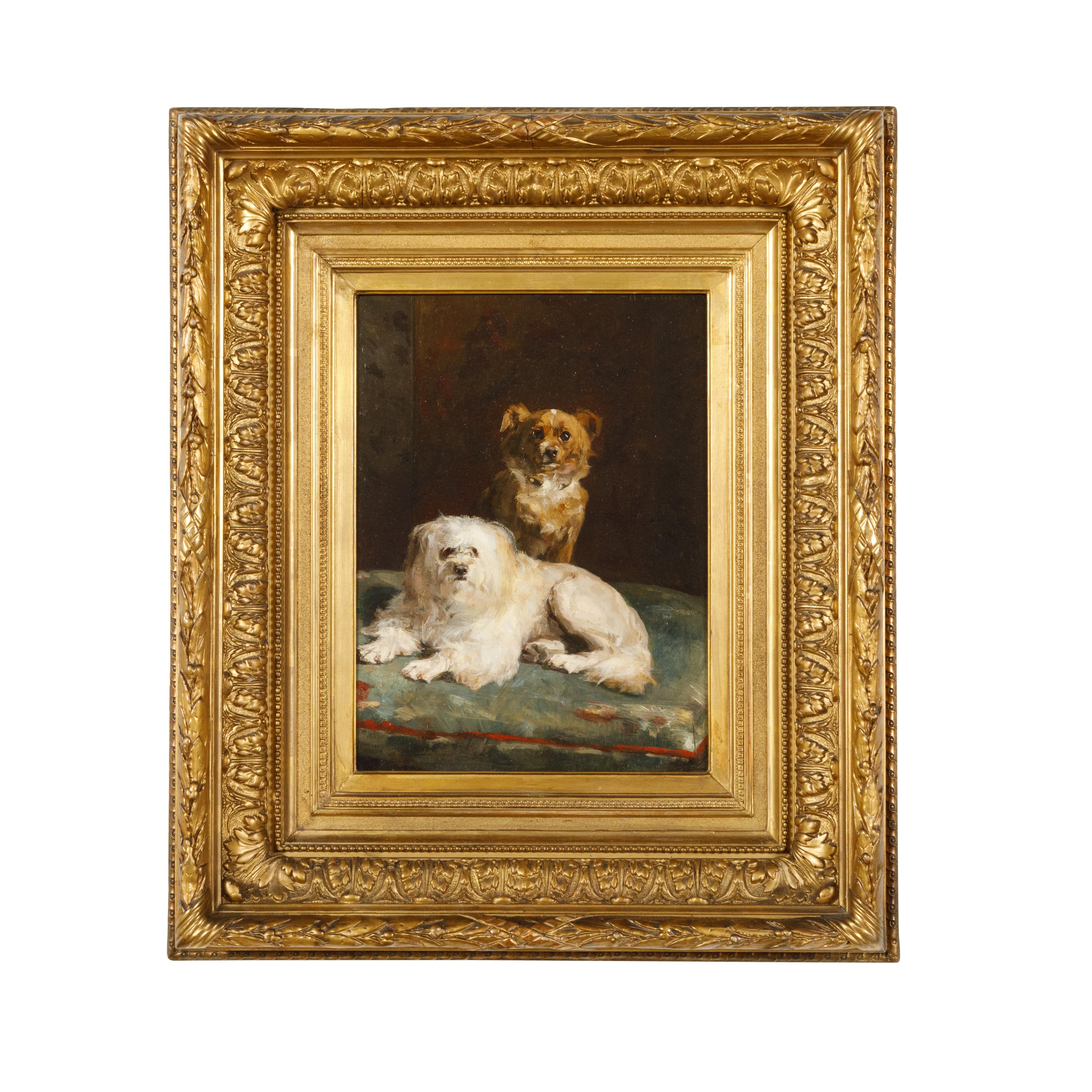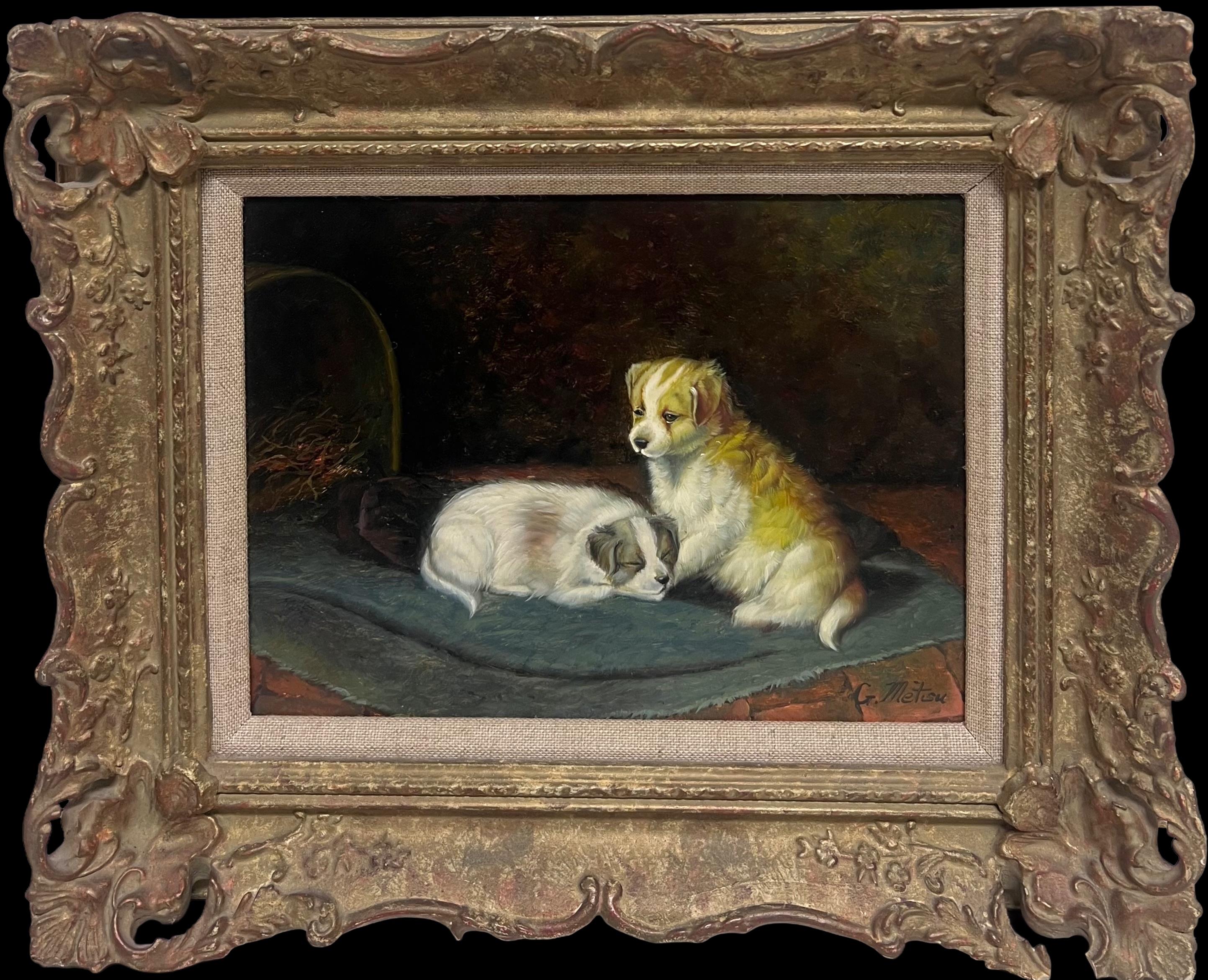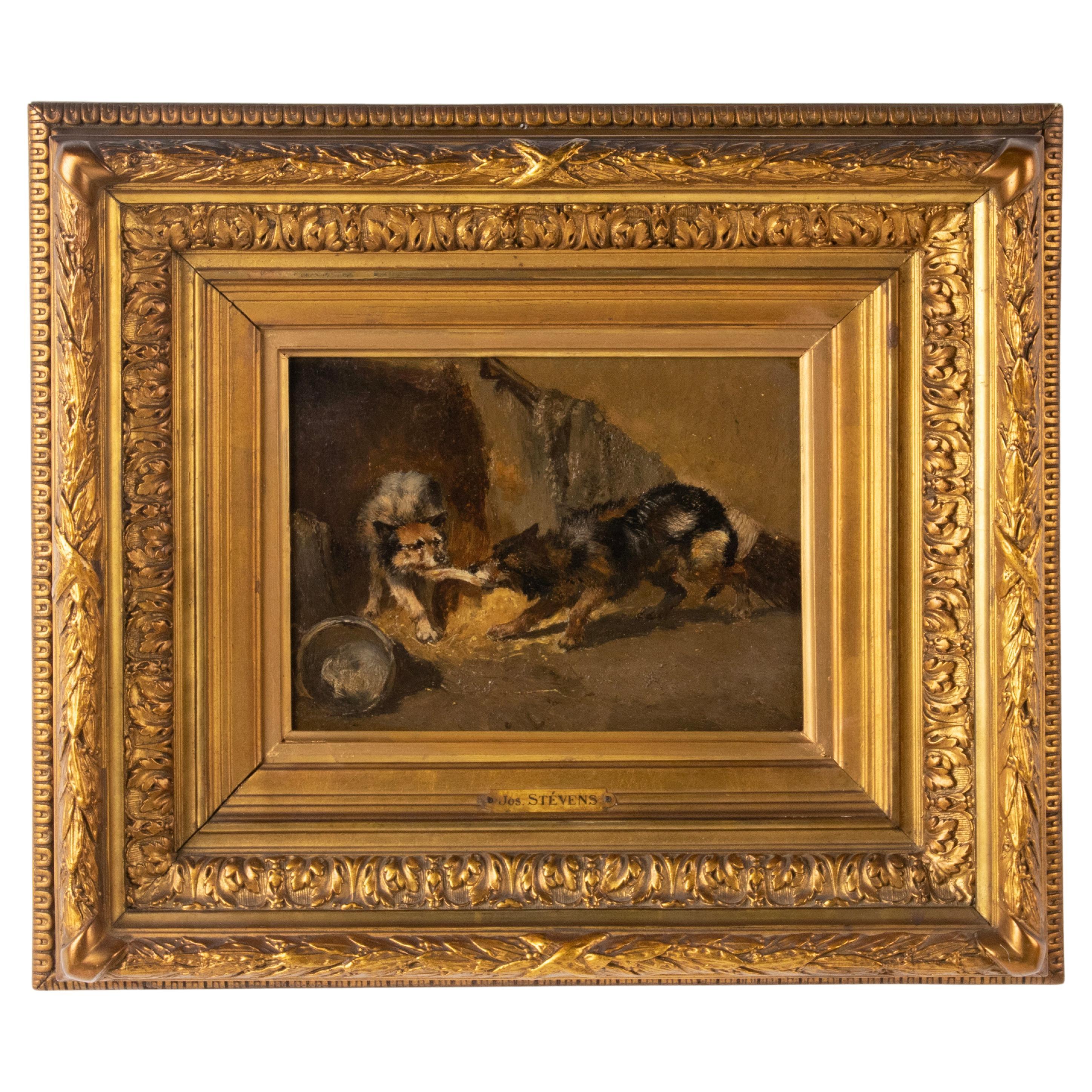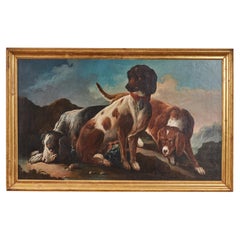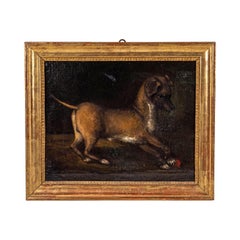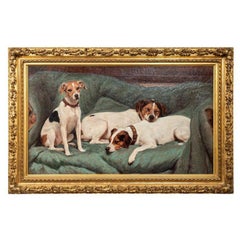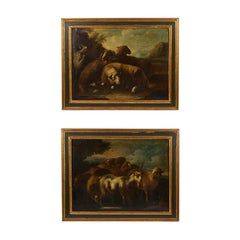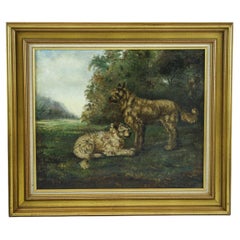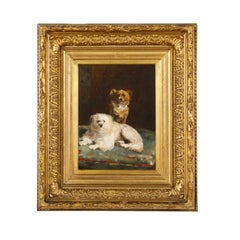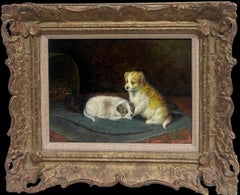Items Similar to Sitting, Attentive Dogs, Oil on Canvas
Want more images or videos?
Request additional images or videos from the seller
1 of 10
UnknownSitting, Attentive Dogs, Oil on Canvas1887
1887
$14,500
£10,986.50
€12,606.14
CA$20,403.84
A$22,429.43
CHF 11,787.88
MX$272,375.02
NOK 147,050.86
SEK 139,320.35
DKK 94,082.80
About the Item
A charming picture of two sitting, attentive dogs. Signed and dated. Hand carved and gilded frame.
- Creation Year:1887
- Dimensions:Height: 27 in (68.58 cm)Width: 22.5 in (57.15 cm)Depth: 2.5 in (6.35 cm)
- Medium:
- Movement & Style:
- Period:
- Condition:
- Gallery Location:Los Angeles, CA
- Reference Number:1stDibs: LU2563212564462
About the Seller
5.0
Vetted Professional Seller
Every seller passes strict standards for authenticity and reliability
1stDibs seller since 2023
Typical response time: 2 hours
- ShippingRetrieving quote...Shipping from: Los Angeles, CA
- Return Policy
Authenticity Guarantee
In the unlikely event there’s an issue with an item’s authenticity, contact us within 1 year for a full refund. DetailsMoney-Back Guarantee
If your item is not as described, is damaged in transit, or does not arrive, contact us within 7 days for a full refund. Details24-Hour Cancellation
You have a 24-hour grace period in which to reconsider your purchase, with no questions asked.Vetted Professional Sellers
Our world-class sellers must adhere to strict standards for service and quality, maintaining the integrity of our listings.Price-Match Guarantee
If you find that a seller listed the same item for a lower price elsewhere, we’ll match it.Trusted Global Delivery
Our best-in-class carrier network provides specialized shipping options worldwide, including custom delivery.More From This Seller
View All18th Century Canine Painting
Located in Los Angeles, CA
Striking, beautifully composed, c. 1740, Italian, oil-on-canvas painting of three hounds in a mountainous landscape. Soulful, slightly naive and richly detailed. Held in an antique, ...
Category
1740s Paintings
Materials
Oil, Canvas
17th Century Oil Painting of a Dog at Play
Located in Los Angeles, CA
Absolutely charming, original, circa 1650, Italian, oil on canvas painting of a puppy at play with a crimson ball.
Canvas size: 14.75 in. high x 18.25 in. wide.
Category
Mid-17th Century Paintings
Materials
Oil, Canvas
Signed, 19th Century Oil Painting of Jack Russell Terriers
By Walter Biddlecombe
Located in Los Angeles, CA
"Shared Rest" - an absolutely charming, fabulously painted, oil-on-canvas painting of three, Jack Russel Terriers nestled together on a bench or sofa, swathed in green fabric. Framed...
Category
1890s Paintings
Materials
Oil, Canvas
Pair of Antique Oil on Canvas Paintings in Hand-Painted and Gilded Frames
Located in Los Angeles, CA
Mated pair of oil-on-canvas, sheep and goat paintings in hand-painted and gilded frames. From the circle of Rosa di Tivoli (1655-1706), a highly regarded Baroque artist active in and...
Category
18th Century Animal Paintings
Materials
Canvas, Oil
Untitled Oil on Canvas of Dog in Motion
Located in Los Angeles, CA
A contemporary framed oil on canvas of a dog in motion. Signed M L in bottom right corner. Canvas size: 38"H x 57"W.
Category
21st Century and Contemporary Animal Paintings
Materials
Oil, Canvas
Untitled
Located in Los Angeles, CA
Italian, hand painted, oil on canvas landscape with hand painted border. See other painting in separate listing that creates a pair.
Category
18th Century Landscape Paintings
Materials
Oil, Canvas
$6,800
You May Also Like
Antique Oil Painting on Board of a Dog
Located in Palm Beach, FL
Antique oil painting on board of a white dog caught in a moment of speculation in an outdoor scene. Signed William Melbon and presented ...
Category
19th Century Victorian Animal Paintings
Materials
Oil
Late 19th Century Dogs Oil on Canvas
Located in Pease pottage, West Sussex
Late 19th Century Oil on Canvas of Two dogs, Good scale, relined and restored (late 20th Century). Later Frame France Circa 1880.
Category
Antique Late 19th Century Paintings
Materials
Canvas
Giltwood Framed Oil on Canvas Dog Painting by Charles Van den Eycken
Located in Atlanta, GA
A Belgian framed oil on canvas painting by Charles Van den Eycken (1859 – 1923), depicting two dogs in an interior. Created in Belgium during th...
Category
Antique 19th Century Belgian Paintings
Materials
Canvas, Giltwood, Paint
Portrait of Two Puppies in Interior Room Setting Signed Oil Painting
By Continental School
Located in Cirencester, Gloucestershire
The Two Puppies
by Gabriel Metsu, Continental artist late 20th century
signed oil on panel, framed
framed: 11 x 13.5 inches
panel : 7 x 9.5 inches
Provenance: private collection, UK
...
Category
Late 20th Century Victorian Animal Paintings
Materials
Oil
Mid 19th Century Oil Painting Dogs by Joseph Stevens
By Joseph Stevens
Located in Casteren, Noord-Brabant
An oil painting of two rustic dogs fighting over a piece of food. It is painted on an oak panel. Signed top left. The signature is a bit faded, it's a monogram J.S. by Joseph Stevens. He often signed with a monogram. In a gilded frame frame with gesso moldings.
Dimensions frame: 41 x 47 cm
Dimensions painting: 17 x 23 cm.
Joseph Stevens is the older brother of the very well-known artist Alfred Stevens. In the book 'The Belgian Art Book' by J. de Geest, it is written that Joseph Stevens has given a new dimension to painting animals. Joseph Stevens is an early representative of realism and social art. While Eugene Verboeckhoven has royal dogs pose on a beautifully embroidered cushion, Joseph Stevens already has an eye for the dark side of animal existence: exploitation by man, who in turn is a victim of society. His first successful painting, Brussels in the morning, shows how miserable dogs and poor people suffer the same fate. In the Sandman, Stevens shows a joint effort of man and dog, in which the viewer cannot ignore the social conditions: exhausting labor at dawn in some suburb. The gray sky and monochromy of the suburb add to the sinister atmosphere. Joseph Stevens was one of the first artists to take the urban proletariat as his subject. Stevens enjoys a very high reputation in his Parisian years. His brother Alfred writes: 'I am of this time, but you, Joseph, you are of the race, and thus you are of all times.' French critics agree. Stevens' works are a source of inspiration for the literature of the time. For example, Beaudelaire writes a poem about Stevens' dogs.
Joseph Edouard STEVENS. Belgium, 1819-1892
Stevens was a painter, etcher and engraver. Brother of the gifted painter Afred Stevens. Education at the Academy in Brussels (1834-1835). Debuted at the Salon in Brussels in 1842. Continued his career in Paris in 1852. He was primarily the painter of canvases depicting domestic animals (dogs, monkeys, horses), sometimes in curious, even idiosyncratic situations, and far from romanticism. This realism, of which he was one of the pioneers, earned him the interest of critics and intellectuals.
His approach was defined by this contemporary realism that eschewed idealized depictions of animals as heroic emblems of nobility. Rather, Stevens emphasized the ordinary animals of everyday life, with a particular focus on working dogs, stray dogs and all of the mutts that wandered the streets of Brussels. Museums and public collections, including' Royal Museum of Fine Arts Brussels, Ghent, Hamburg, Paris, Musée du Louvre, Rouen, Musee des Beaux-Arts. Stuttgart, State Gallery. King Leopold...
Category
Antique 1850s Belgian Beaux Arts Paintings
Materials
Gesso, Oak, Pine, Paint
Two resting dogs, after Sir Edwin Henry Landseer RA
By Sir Edwin Henry Landseer, 1802-1873
Located in GB
This painting after Edwin Henry Landseer RA (7 March 1802 – 1 October 1873) shows two dogs which were among Landseer’s favorite subjects. They are rendered in a naturalistic and expr...
Category
20th Century Animal Paintings
Materials
Canvas, Oil
More Ways To Browse
Carved And Gilded Frame
Painting Sitting
19th Century Oil Paintings Of Dogs
Vintage Boat Art
Summer Oil Painting
19th Century Oil Painting Italy
1953 Art
Still Life On Black Background
Mother Child
Contemporary Japanese Art
Impressionist Flower Paintings
Vintage Painting Green
Art Galleries London
Young Boy
Oil Painting Summer Landscape Late
Famous Art
1950 Oil Paintings Of Paris
Mid Century Modern Architecture Painting
